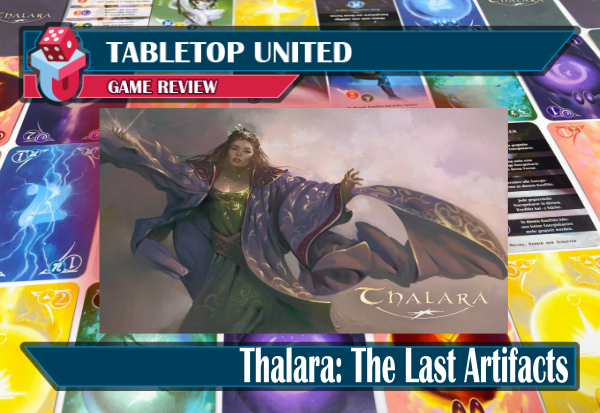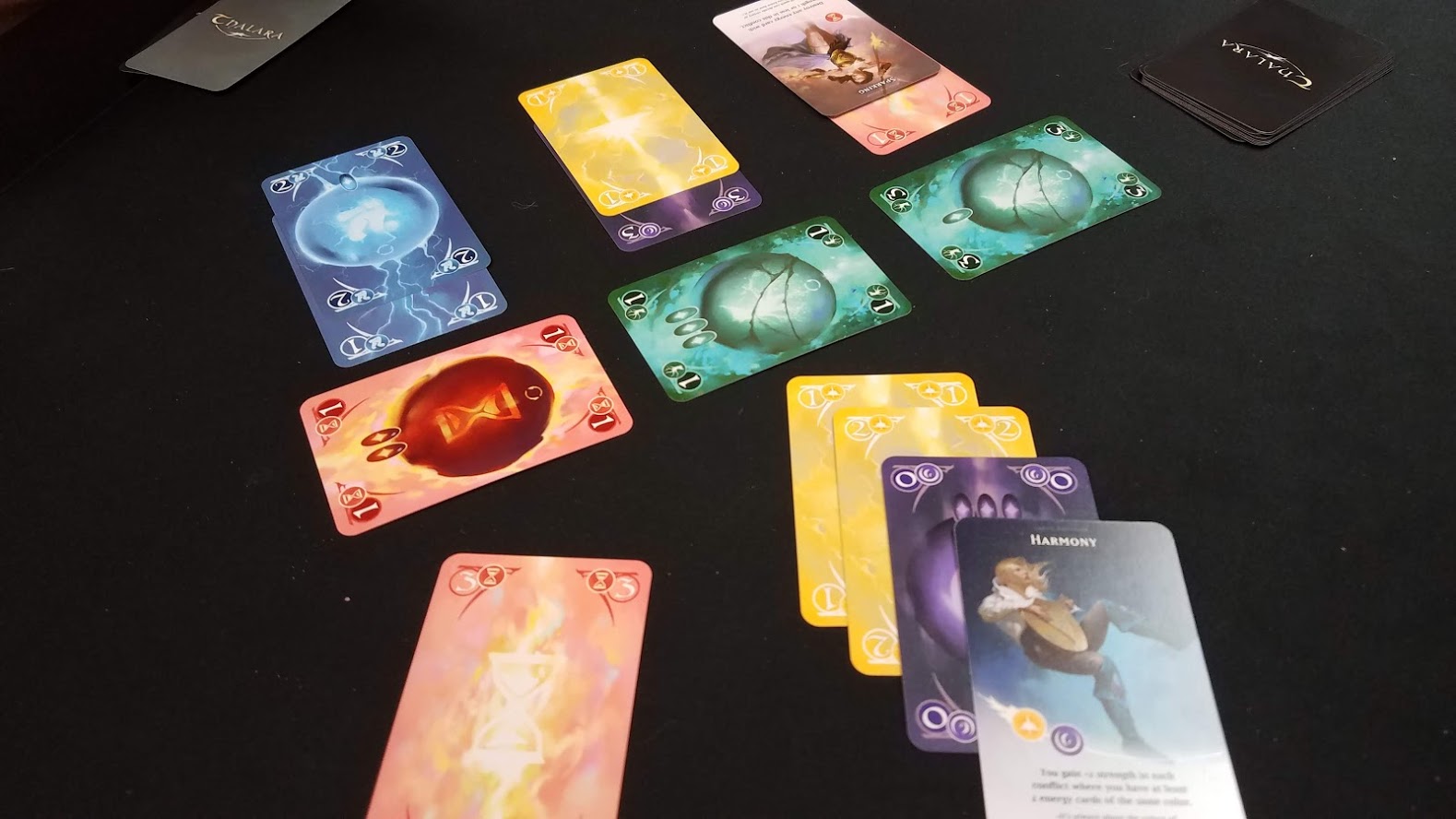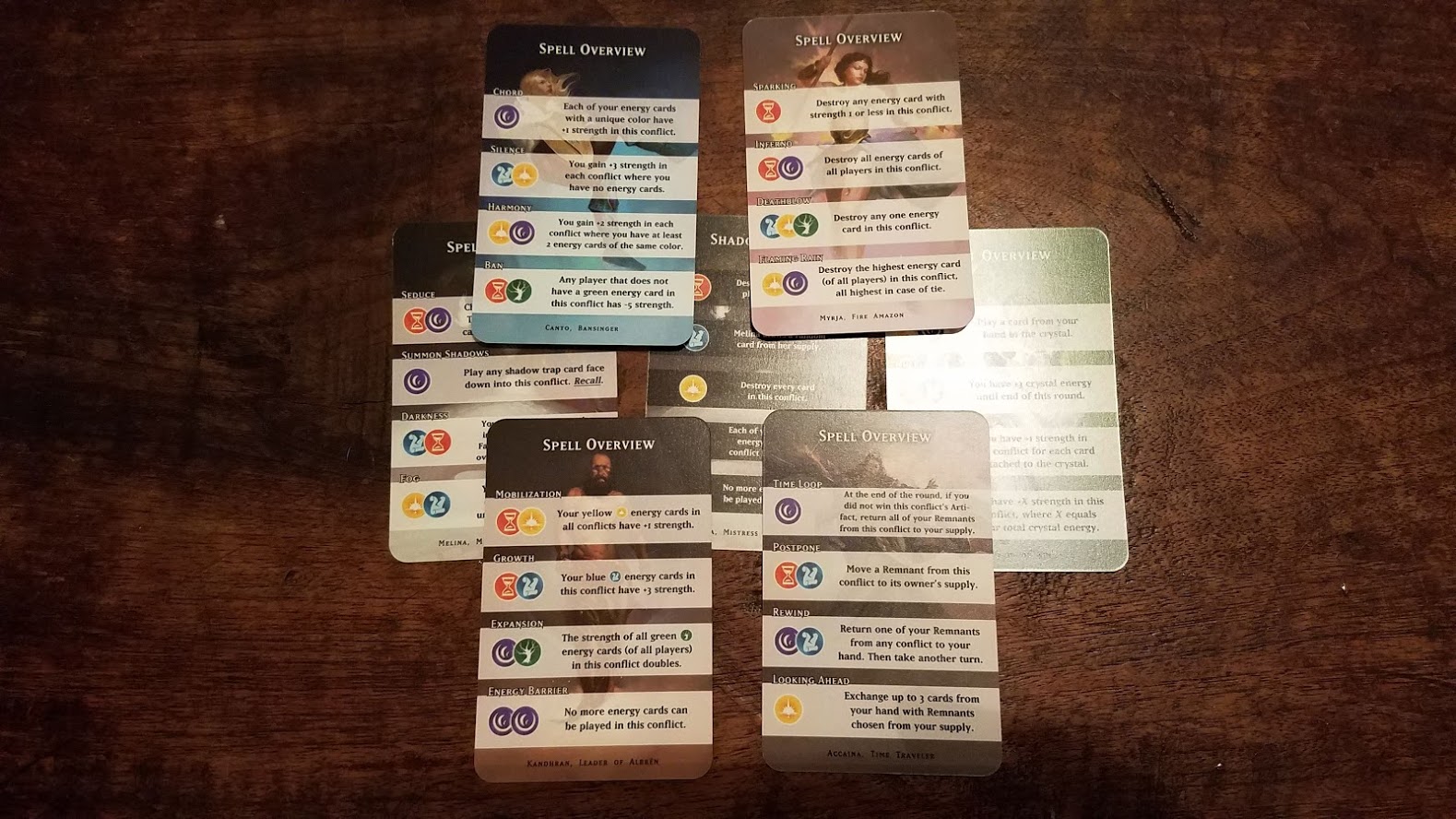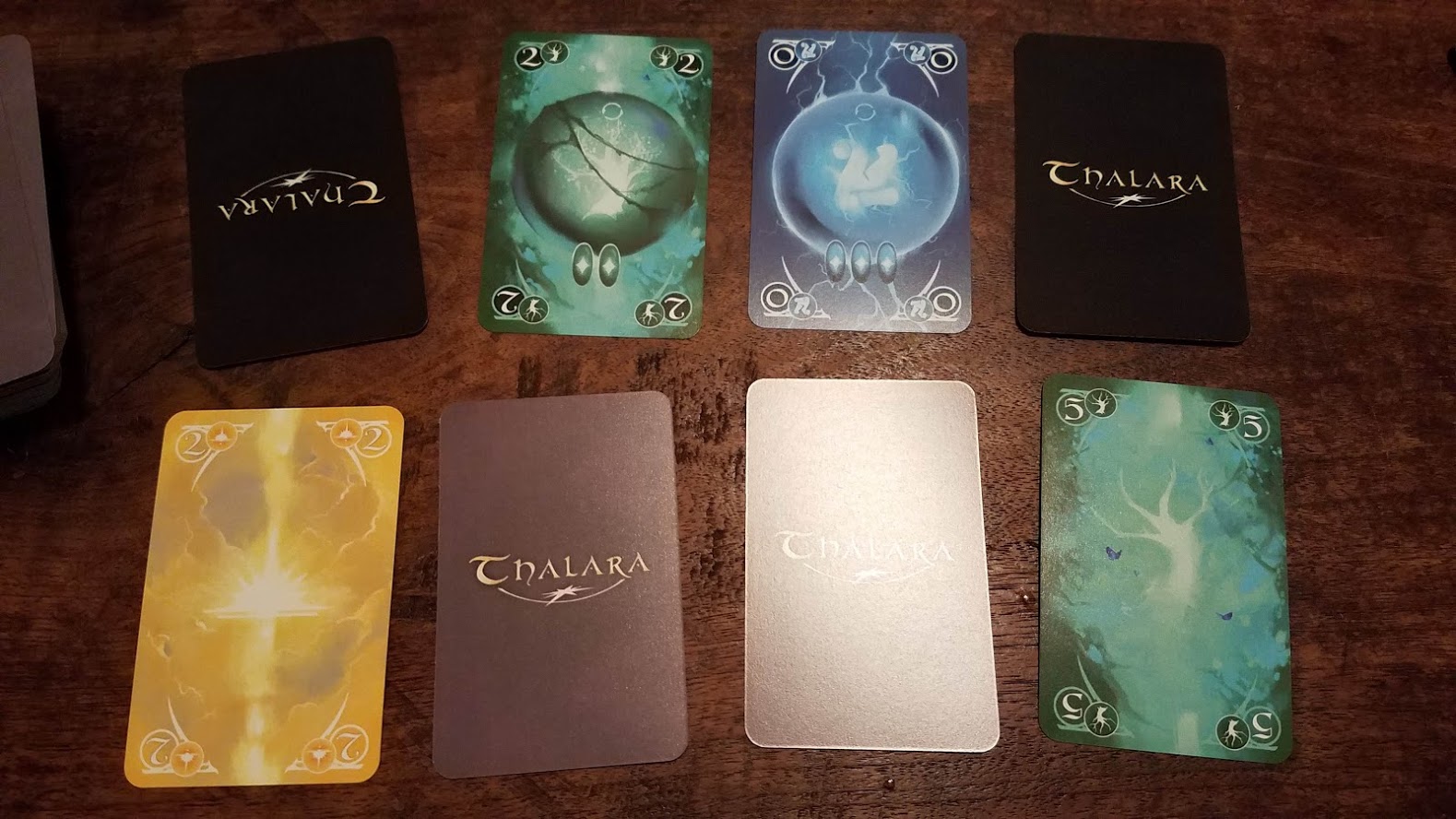
Thalara: The Last Artifacts
Designer: Alexandre Wrede
Artist: Martin Sobr
Publisher: Wredespiele
Year Published: Kickstarter 2020
No. of Players: 2-4
Ages: 10+
Playing Time: 20-30 minutes
Main mechanic / Theme: Area / Majority Influence, hand management
Find more info on BoardGameGeek.com and on Kickstarter.
Note: A four player review copy was provided in order to do this review.
Overview:
Thalara: The Last Artifacts is an abstract majority control, asymmetric fantasy fighting game where players choose different characters to battle over special artifacts drawn to the center of the table.
By choosing which cards to use each round, knowing your character’s abilities and skills is important. The cards you play activate character spells, which in turn help you influence and capture the artifacts drawn each round.
Thalara is a low luck game. Every choice you make is important to the spells you are able to activate and what artifact cards you are trying to capture. The only luck in the game is what artifacts are drawn to battle over each round.

Gameplay and mechanics:
On your turn, you choose which remnant cards to put into your hand for a total of seven to start the round. However, once a remnant card is used to influence and capture an artifact, that remnant card is gone. Once players are out of cards, your influence is calculated at each artifact and whoever has the most influence there receives that artifact as a prize.
Artifacts are important because they go to your hand taking the place of future remnant cards. This is a good thing, though, as artifacts, once captured, can’t be lost. They remain as part of your hand of seven cards so be sure to capture enough artifact cards!
The game is played over a few rounds, with the game ending when there are not enough remnant cards left to fill a player’s hand to seven or a player has seven or more artifacts in total.
It seems simple, but each character has asymmetrical powers and spells. The spells are activated based on the energy icons found on each remnant and artifact and each character may need more of a specific energy type than another. For example, Kandhran’s spells use more purple and red than the other types of energy. Accaina uses purple and blue. So, as players choose remnant and artifact cards for their hands and also to capture more artifacts, it’s important to note which color you are winning and using. If you use most of your blue cards in the first round or two, you won’t have any left in remaining rounds unless you’ve won some artifacts with blue energy.
Once the game is over, count the total number of star emblems from all of your artifact cards. The player with the most emblems wins the game.
Theme, Artwork and Illustration, Graphic Design and Layout
Thalara is mostly an abstracted battle game, but the artwork really fills out the game. The cards are vibrant and the characters interesting- each has it’s own style and color. The layout of the cards is done well. As cards are played to the table, they need to be read by both players and are designed to read from either direction, similar to a regular deck of playing cards. The strength, energy color and type, and star emblems are easy to identify from several feet away so there is no confusion. The designer, artist, and graphic designer did a good job to convey information quickly and easily from both sides of the table. Although a small box game, the fantasy theme fits well and the artwork makes game play even more interesting as you can create stories and images within your head as the characters fight over various artifacts.

What worked:
Personally, I liked the fact that each character is different while using identical remnant decks. Obviously, as you win artifacts, your cards in hand evolve as the game is played. So, the end of the game hands look much different between the players than when they started. I’m not a huge fan of “take that” or “battle” type games, but, the speed of rounds in Thalara and decision making really bring this to the top of my list of battle games. Characters don’t have life points or hit points so you don’t feel as if you are losing. Being able to combo colors to activate spells is fun and again, deciding which spells to work towards activating makes the choices strategic. This is a game that will move to the top of my list two player games.
What can be improved:
As the game I played is a prototype sent out to reviewers, some things could change. The color of the different remnant decks are very close and being color blind confused me. I couldn’t tell one remnant deck from another until my buddy took a look at them during set up and showed me the slight variations. I’m sure that will be fixed in final production. I’d also like a bit more detail or example of things within the rulebook. Both of these slight issues are easy to fix and I suspect the designer and publisher are aware of those problems.
Final thoughts:
I thoroughly enjoyed the game and likened it to games like Epic from White Wizard Games or even Magic:TG. However, Thalara is much more simple and you don’t build or construct a deck in order to play. Choosing cards for your hand limit each round helps me feel like I can get into the game much faster, easier, and gives me that feeling of choice and control. I highly recommend this game if you like two player asymmetrical player powers as well as an influence / control game. I really didn’t feel like I was getting beat up or that I was beating up my opponent as you fight over artifacts. Go back this game on Kickstarter as it’s one you won’t want to miss it!
